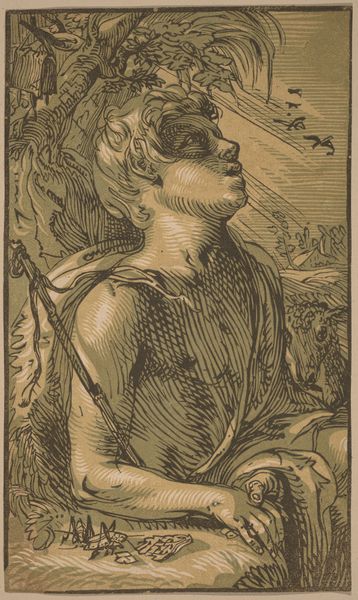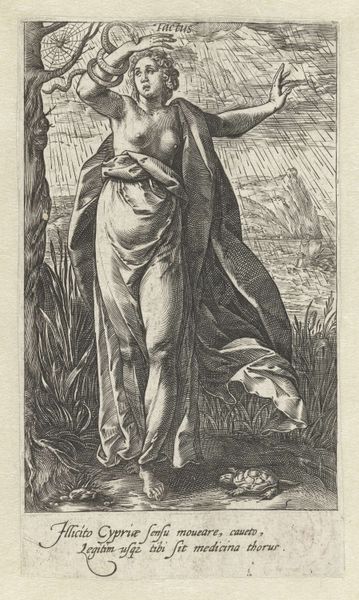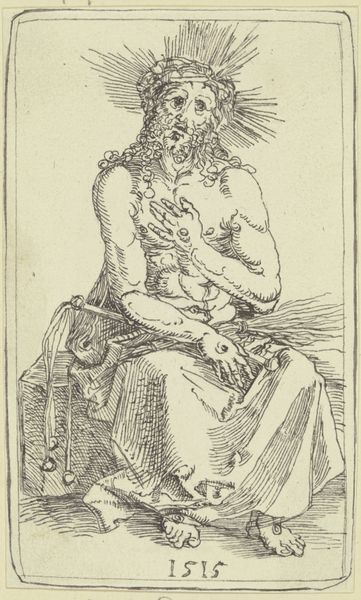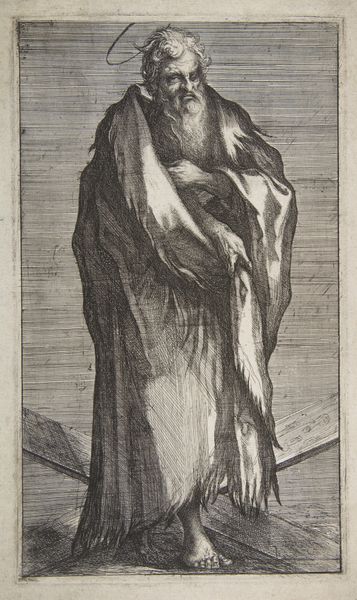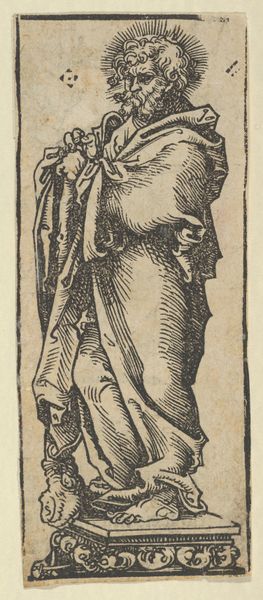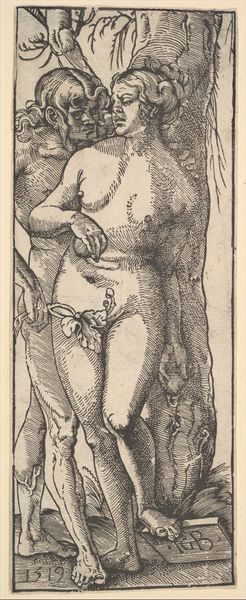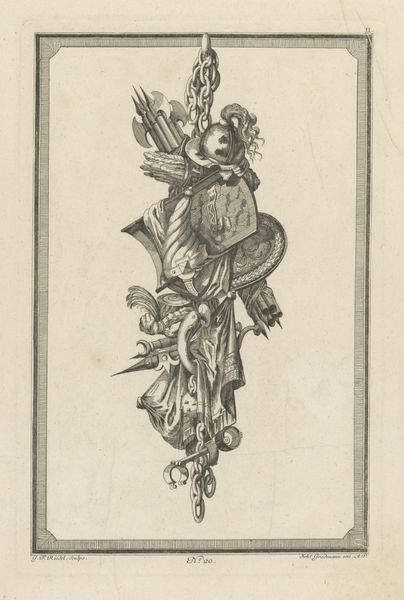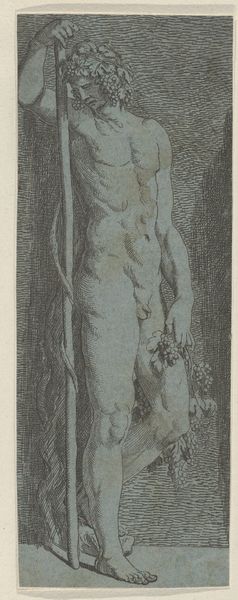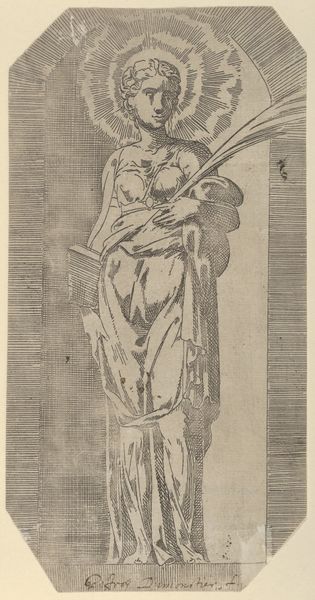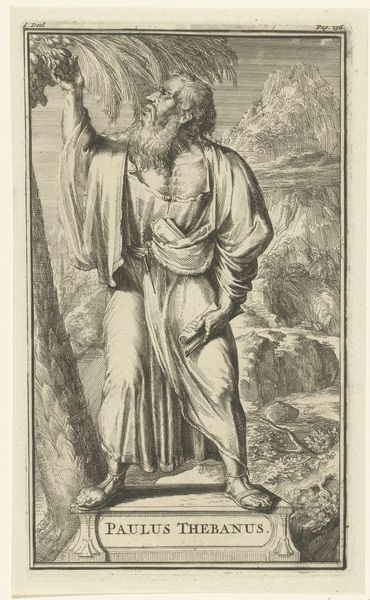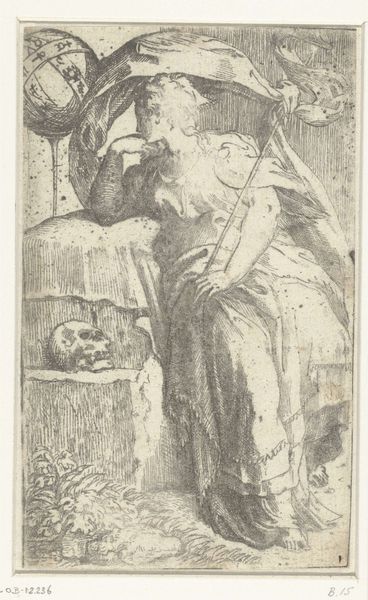
drawing, print, ink, engraving
#
portrait
#
drawing
#
pen drawing
# print
#
landscape
#
mannerism
#
ink
#
engraving
Dimensions: height 237 mm, width 141 mm
Copyright: Rijks Museum: Open Domain
Editor: So, here we have Hendrick Goltzius’s “Johannes de Doper in de wildernis”, or “John the Baptist in the Wilderness,” created between 1593 and 1597. It’s an engraving, and I’m struck by how much detail Goltzius manages to create with just line work. What do you see in this piece, considering his method? Curator: Looking at it through a materialist lens, it is critical to acknowledge that printmaking, specifically engraving, allowed for the mass production and dissemination of imagery. Goltzius's choice of engraving directly challenges the then-prevailing hierarchy of artistic mediums. Painting and sculpture were considered "higher" forms because they were unique, hand-crafted objects, aligning with aristocratic patronage and values of artistic genius. However, engraving facilitated a wider audience for his work. What was John the Baptist offering? Editor: Salvation? And by printing, isn’t Goltzius offering images of salvation, well, in a reproducible format to many, challenging a tradition of unique icons afforded by a few patrons? Curator: Precisely. It democratized access to religious imagery, challenging the control that the church and elite patrons held over religious narratives. Think about the socio-economic implications of easily reproduced imagery versus unique painted icons, often commissioned and controlled by the church. Editor: It's interesting how the materiality of the work connects to religious and societal power structures. I hadn’t thought about engravings in that way before, but it does make sense. It gives John's message a whole new accessible feel through art. Curator: Right. It's not just about *what* is depicted, but *how* and for *whom* it is made. Understanding the context of production offers crucial insights to artworks of all types. Editor: This makes me think about other printmakers and their engagement with the culture around them in a new light. Thanks for the different view!
Comments
No comments
Be the first to comment and join the conversation on the ultimate creative platform.
